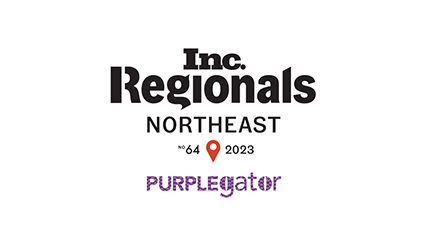Blog /
Creating a Marketing Plan for E-commerce

Success in e-commerce requires more than just great products; rather, it involves the creation of a marketing plan for traffic, builder of relationships, and converter of visitors into loyal customers. Even the best e-stores might fail to be outstanding among an immense number of websites without a corresponding marketing strategy. A clearly formulated e-commerce marketing plan protects a business while moving it through the wilds of the digital landscape and ensures effective communication with the target audience.
Overview of E-commerce Marketing
E-commerce marketing includes a strategy of at least some promotion of online store products or services. It requires working with different channels, tools, and insights from data in order to develop the visibility of your website, attract visitors, and eventually turn them into paying customers. E-commerce marketing combines various channels – content marketing, social media, SEO, and email marketing – to build up a customer base that can be sustainable.
Probably the most powerful capability of e-commerce marketing is the fact that, through tracking customer behavior, analysis of campaign results, or through A/B testing, it can be measured and optimized in real time. Online businesses enjoy the power of data-driven decisions leading to efficient marketing strategies.
Importance of Having a Marketing Plan for E-commerce Success
A marketing plan is crucial to the success of an e-commerce business since it creates structure, direction, and measurable goals. Failing to have a plan means wasting resources on strategies without a return to show for it. A finely drafted marketing plan makes sure your marketing efforts are properly directed to business objectives, thus helping you get on track and make the most of your efforts across channels.
A comprehensive marketing plan also makes clear who your target audience is, along with customer behaviors, while giving precedence to the best strategies. You will be in a position to apply your energies and resources in those channels and modes that yield the highest return on investment, hence improving overall corporate performance. Whether you are an owner of a small business or involved in a large-scale operation, having a clear roadmap at hand makes adaption to any change easier, hence competitive, in the marketplace.
What Is an E-commerce Marketing Plan?
The e-commerce marketing plan is a document in which the strategic proceedings of marketing an online business are drawn. This defines the kernel elements of the business marketing strategy and dictates clear objectives to which the marketing team aspires. This would include a breakdown of the marketing channels, target audience, budget, and key metrics on how success can be measured.
Basically, the e-commerce marketing plan outlines a strategy of how a company intends to attract, involve, and convert potential customers. This includes anything from digital advertising and content strategy to social media engagement and email marketing.
The core components of a solid marketing plan include:
- Target Audience: Identifying the people who will most benefit from your products.
- Goals and Objectives: Clear, measurable goals that define success.
- Marketing Channels: Choosing the best platforms to reach your audience.
- Budget Allocation: Allocating resources to maximize ROI.
- Key Metrics: Identifying the key performance indicators (KPIs) to track the success of your campaigns.
Goals and Objectives
Perhaps the most critical thing that can be done for any e-commerce marketing plan is to establish goals and objectives. Setting up goals orients your efforts, while setting objectives offer clear-cut benchmarks against which success is to be evaluated. Goals should be specific, measurable, attainable, relevant, and time-bound-that is, SMART. They also have to be consistent with your general business strategy and actually reflect what you want to reach with your marketing effort.
Common e-commerce marketing goals include:
- Increasing Sales: Growing revenue by attracting more visitors and converting them into customers.
- Brand Awareness: Expanding the reach of your brand and making it recognizable in the market.
- Customer Retention: Building long-term relationships with customers to encourage repeat purchases and loyalty.
By setting measurable objectives, like achieving a specific conversion rate or growing your social media following by a certain percentage, you can track your progress and adjust your strategy as needed.
Key Steps to Creating an E-commerce Marketing Plan
A good marketing plan involves a deep understanding of your audience, competition, and the best channels to market through. It’s a strategic process of data analysis, setting crystal-clear goals, and adjusting incessantly according to market changes. Here are the main steps toward an e-commerce marketing plan:
Define Your Target Audience
It’s the foundation of your marketing strategy to understand who your target audience is. Without clarity on who your customers are, you cannot devise messages that resonate with them or select the appropriate channels to reach them.
Demographic Insights
Start by identifying what the key demographics are: for example, how old, men/women, income bracket, education, place of residence. Knowing this will indicate the broad characteristics and will enable a focused marketing strategy that speaks directly to them.
Behavioral Analysis
Next, dive deeper into your customers’ behaviors: what products they are interested in, how they use your website, and what their purchasing habits are. That’s where Google Analytics comes into play: to understand how users flow through your site, what contributes to conversions, and what kind of content or products they seem to be more interested in.
Analyze Competitor Strategies
Understanding your competitors is critical for survival in the e-commerce space. Competitor analysis allows you to realize the gaps they have in strategy and potential opportunities that you can use to your advantage to further tune your approach. This helps you, with the knowledge of what works for others, to adapt and improve your business to have a competitive advantage in the market.
Conducting a SWOT Analysis
A SWOT analysis can give you an overall picture of your competitor’s and your own strengths, weaknesses, opportunities, and threats. It lets you take a peek at the strong and weak points of your competitors and their respective market positioning to know where you stand and where to capitalize on the gaps they are unable to cover.
Here’s how to conduct a SWOT analysis:
- Strengths: What are your competitors doing well? Are they targeting the right audience, or offering products with strong demand? Identifying their strengths will help you learn from them.
- Weaknesses: What are they lacking? Is their website user-friendly? Are their product offerings outdated or overpriced? Recognizing their weaknesses gives you opportunities to position your business better.
- Opportunities: Look at trends and market gaps that your competitors might be missing. Are there emerging consumer needs or marketing channels they aren’t exploring yet?
- Threats: What risks could affect your business because of your competitors? Is there a new player in the market, or are they improving their offerings quickly? Being aware of potential threats keeps you proactive in your approach.
Leveraging Competitor Benchmarks
Another way to monitor your performance against the competition using benchmarks. You can track some key performance indicators like traffic, conversion rates, social media engagement, and sales performance to get some feel about the positioning of your e-commerce business.
To leverage these benchmarks:
- Compare your website’s traffic and engagement with your competitors’ sites.
- Measure conversion rates to understand if your website is optimized for sales.
- Look at how your competitors are using social media and email marketing.
- Analyze their customer reviews and feedback to identify areas where you can improve.
By understanding your competitors’ benchmarks, you can adopt similar strategies, improve on their tactics, and create a more efficient, impactful marketing plan.
Choose Marketing Channels
All in all, in digital marketing options, finding just the correct channels does turn out to make all the difference in driving home with more returns towards any e-commerce enterprise. Choosing proper marketing channels would mean covering your audience, seeing that one achieves maximum returns on investment and a way of fostering brand loyalty on a long-term basis. Here goes the breakdown with effective channels.
Social Media
Social media platforms are a direct medium for customer interaction, brand building, and traffic generation towards your online store. Social media further enables a business to personalize its messages, analyze customer sentiment, create promotional offers, and participate in real-time conversations with prospective customers.
To make the most of social media marketing:
- Post regularly with visually appealing content.
- Engage with followers through comments, polls, and Q&As.
- Run targeted ads to reach specific demographics.
- Collaborate with influencers or brands that align with your business values.
The power of social media lies in its ability to create authentic connections and promote products in a more relatable, less intrusive way than traditional advertising.

Email Marketing
One of the strong ways to date for nurturing relationships and driving sales remains email marketing. Be it the welcome emails, newsletters, or promotional campaigns-everything just gets across directly to the inbox of a pretty engaged audience.
Effective email marketing campaigns focus on providing value:
- Segment your email list to send personalized, relevant content.
- Use automated email sequences to nurture leads and convert them into customers.
- Offer exclusive deals or early access to new products to keep your customers engaged.
- A/B test subject lines, copy, and design to improve open and click-through rates.
Email marketing not only helps maintain contact with existing customers but also keeps your business top-of-mind when they’re ready to make a purchase.
SEO Strategies
SEO is the process of optimizing your website to rank higher in search engine results pages, driving organic traffic to your website. It’s helping your target audience find your products when they search using keywords related to your business online.
Effective SEO strategies include:
- On-Page SEO: Optimize product pages with relevant keywords, compelling product descriptions, and high-quality images.
- Content Marketing: Create valuable blog posts, videos, and resources that answer customers’ questions and drive traffic to your site.
- Link Building: Earn high-quality backlinks from reputable sites to improve your domain authority and search engine ranking.
- Mobile Optimization: Ensure your website is mobile-friendly, as more consumers are shopping on their phones than ever before.
SEO is a long-term strategy that can significantly increase traffic and conversions by ensuring your e-commerce business ranks well on search engine results pages (SERPs).
Budget Allocation
A well-planned budget will ensure your e-commerce marketing efforts are at their most effective. You’ll be in the best position to allocate resources to channels and tactics that will return the best results. Without a clear-cut budget, you may go on to overspend on low-performing strategies or fail to seize high-ROI opportunities.
Prioritizing High ROI Channels
Focus on budgeting for channels providing the best return on investment; you don’t need to be everywhere, just where it matters most. For instance, if social media ads drive a lot of conversions, invest more in them. If email marketing is one channel that has been driving regular sales, then it’s worth going more frequently and making it more personalized.
First of all, look backward to see what channel came out best. Then you can adjust your efforts accordingly. Put a concentration on high-performing channels so that you get your biggest bang for your buck in marketing for growth without wastage.
Testing and Optimizing Campaigns
No marketing plan is perfect the first time. Testing and optimization are key toward constant improvement in marketing campaigns. A/B testing allows you to test different ad variants, email, and landing page variations to establish which works best. Test one variable at a time, such as subject lines, call-to-action buttons, or even the product image, and measure which works better in bringing more conversions or engagement.
Rework your strategy using the data garnered from such tests. Repeating it will keep all your campaigns at an optimum state, yielding you the best of results. This is a step in continuous processing and, regularly testing to assure your marketing remains effective and productive.
Best Practices for E-commerce Marketing
In any e-commerce, business success will depend on a value-offering approach across the customer journey. Here are some best practices that will keep your e-commerce marketing efforts on track and ensure success.
Customer Retention Strategies
It is much easier and cost-effective to retain customers than to attract new ones. For long-term relationships, it’s better to focus on strategies that foster loyalty and repeat business. One effective strategy can be the reward program in which, for every purchase, customers get points that can be utilized for availing discounts or special offers.
Other methods would be e-mail remarketing: sending personalized e-mails with product suggestions based on earlier purchases. This will keep your brand top-of-mind and may stimulate a return customer. Not to mention the importance of great customer service. Make sure your support team is responsive and helpful to ensure customer satisfaction and create a higher potential for repeat business.
Personalization and Customer Experience
Personalization gives businesses a competitive edge by letting them make shopping experiences personal for each of their customers. This can be enabled through the use of customer data, such as past purchases, browsing behavior, and demographics, to offer personalized product recommendations, discounts, or special offers. Personalization makes customers feel special and more likely to convert.
Also, pay extra attention to how customers will feel using your website. The better and more comfortable the site, the more customers will want to be in it. Make sure it’s mobile-friendly, as a huge amount of e-commerce shopping is being done via smartphones and tablets. Easy checkout and well-described products can lower the cart abandonment rate.
Tracking and Measuring Results
One of the best things about digital marketing is how everything can be tracked and measured. If you aren’t tracking vital metrics, it’s impossible to ascertain whether your effort is paying dividends. Monitoring the results allows changing the strategy due to real, actual data in your hands, therefore making the entire marketing plan more effective over some time.
Key Metrics for E-commerce Marketing Success
To measure success, focus on these key e-commerce metrics:
- Conversion Rate: The percentage of visitors who make a purchase. A higher conversion rate indicates that your marketing strategies and website are working well.
- Average Order Value (AOV): The average amount customers spend per transaction. Increasing AOV can significantly boost your revenue without having to acquire more customers.
- Customer Lifetime Value (CLV): The total revenue a customer is expected to generate during their relationship with your brand. CLV helps measure the long-term profitability of your marketing efforts.
- Return on Ad Spend (ROAS): Measures the effectiveness of your advertising campaigns by comparing the revenue generated to the amount spent on ads.
These metrics provide valuable insights into what’s working and where improvements can be made. Keep track of them regularly to ensure you’re hitting your goals.
Tools for Data Analysis
To efficiently keep track of all these metrics, utilize data analysis tools like Google Analytics, which gives extensive insights into website performance, visitor behaviors, and even conversion tracking. For e-commerce-specific data, out-of-the-box analytics track sales, customer behavior, and marketing performance in platforms such as Shopify, WooCommerce, and BigCommerce.
Also, other analytical tools such as Klaviyo for Email Marketing Analytics and SEMrush SEO Tracking will give a wider perspective toward one’s marketing performance. Set these in your e-commerce marketing plan so you can stay ahead on the metrics that count and optimize them on the go in real time.









